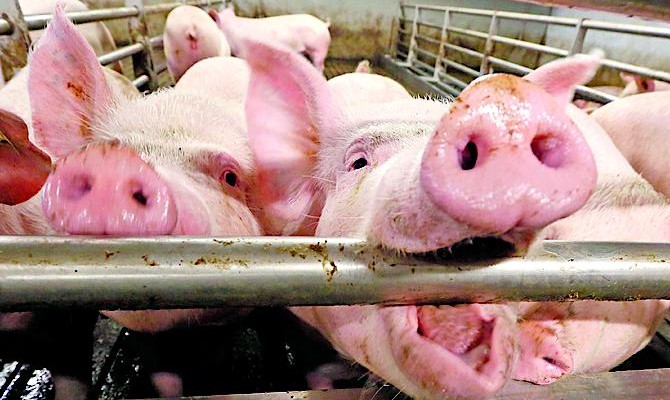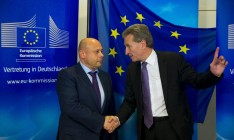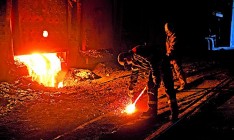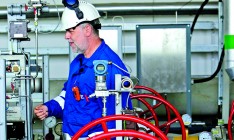Economy
TradeDamages from the loss of exports to the countries of the Customs Union are still higher than the growth of sales to the EU

Increased trade with the EU in the first six months of the year could not compensate for Ukraine’s loss of the Customs Union (CU) market. Based on data from the State Statistics Service and estimates of Capital, in January — June exports for Ukraine to the EU have increased by 13.3% compared to the same period in 2013. In monetary terms it provided an increase of US $1.1 bn — up to US $9.5 bn. At the same time, the volume of exports to the CU has halved — by 27.4%, including to Russia — by 23.3%. This deprived Ukraine’s economy of US $2.7 bn export revenues, of which the US $1.9 bn loss accounted for the Russian Federation.
However, it would be incorrect to say that the six-month unilateral liberalization of trade with the EU, which started on April 23, reimbursed Ukraine almost half of the damages caused by cooling of relations with Moscow. In many cases, industries that suffered the most from the unavailability of the markets in the Customs Union are not the same industries that benefited from preferential treatment of the EU.
Neither here nor there
Animal products were the main victim of the trade war with Moscow. Russia attacked it in the first place. In the middle of June Rosselkhoznadzor (Federal Service for Veterinary and Phytosanitary Surveillance of Russia) reduced to two the number of checkpoints and temporary storage facilities for livestock products delivered directly from Ukraine. The service explained this by the increasing incidences of detection of unacceptable levels of concentration of antibiotics, especially in dairy products, as well as the desire to counteract smuggling of meat products. Then on June 30 Rosselkhoznadzor began demanding additional documents for the import of Ukrainian products containing raw materials of animal origin. Then on July 4 the Rospotrebnadzor introduced a ban on the supply of milk and dairy products produced by seven enterprises of Milkiland-Ukraine in addition to a similar embargo on imports of products manufactured by several enterprises in Milk Alliance and Almira, applicable since April. As a result, over the first half of the year export of meat and edible offal decreased by 65.4% and the export of milk, dairy products, eggs and honey — by 28.3%. This resulted in a loss of US $48.9 mn and US $44.9 mn, respectively.
Meanwhile, livestock producers also failed to refocus their external supplies to European markets. Ukrainian producers supplied to the EU meat and offal in the amount of US $8.9 mn. The only countries that have dramatically increased purchases of Ukrainian meat and offal are the Netherlands and Germany. Exports of these products to the first country have soared from US $3,200 to US $8 mn, to the second country — from US $3,900 to US $357,700. At the same time, the use of quotas for import of licensed livestock products, particularly beef and pork, is close to zero.
The situation with dairy products, eggs and honey is similar. Even all the export of these products to the EU within six months (US $ 22.8 mn) does not cover producers’ losses in the CU. For this category of products statistical data was rescued by honey producers who have been actively increasing sales in Italy and Spain and during the first three months of trade preferences have used the annual 5,000 t quota for duty-free import into the EU by 65%. However, soon the situation may improve.
Director of the Ukrainian AgriBusiness Club Volodymyr Lapa says reorientation of Ukrainian farmers and livestock breeders to European markets is hampered by the absence of two laws. The first one — on guaranteeing the safety and quality of food, which was adopted in July and is currently awaiting the president’s signature. It harmonizes Ukrainian standards in this sphere with European regulations, provides for the establishment of a single oversight authority in food safety and implements European principles for the regulation of GMOs. The second one on the identification and registration of animals is awaiting a second reading in the parliament.
Then, on September 28 — October 2 Ukrainian livestock enterprises will be inspected by the expert mission from the Directorate General of EU’s SANCO. Adoption of both laws and favorable results of the mission will allow Ukrainian producers to start moving closer to the West.
Blow to the industry
Producers of railway locomotives are going through some hard times at the moment. Their exports to Russia fell by 57.1%, causing a loss of US $570 mn — the worst among all industries. Formally, there are no longer restrictions on their export in Russia. For the first time Moscow introduced them in the summer of 2013, when in July the Federal Customs Service of Russia strengthened control over goods imported by more than 40 Ukrainian companies. Among the latter were manufacturers of railway locomotives and rolling stock, namely Dniprovahonmash, entities of Azovmash Group, Stakhanov Carriage Works and manufacturer of car casting Kremenchuk Steelworks.
For the second time Moscow struck mechanical engineering in September — October, when the Federal Budgetary Organization Register of Certification on the Federal Railway Transport (FBO RC FRT) suspended the import of railway cars from four plants, which account for 80% of Ukrainian production — Kryukov Carriage Works, Azovmash, Dniprovahonmash and Stakhanov Carriage Works. Officially, those restrictions were lifted, but in practice deliveries from Ukrainian companies to Russia have sunk.
Ukrainian enterprises did not find a way to divert supplies of locomotives to the EU. During the first half of the year, Europeans bought Ukrainian locomotives in the amount of US $47.7 mn, which could not compensate even the tenth part of the semi-annual losses in Russia. Prior to compensation for losses and entering the European market, in addition to the already cooperating Baltic countries, Ukrainian railcar producers must undertake expensive refurbishment and upgrade facilities to the new standards of production.






 of the agreement of syndication with Financial Times Limited are strictly prohibited. Use of materials which refers to France-Presse, Reuters, Interfax-Ukraine, Ukrainian News, UNIAN agencies is strictly prohibited. Materials marked
of the agreement of syndication with Financial Times Limited are strictly prohibited. Use of materials which refers to France-Presse, Reuters, Interfax-Ukraine, Ukrainian News, UNIAN agencies is strictly prohibited. Materials marked  are published as advertisements.
are published as advertisements.